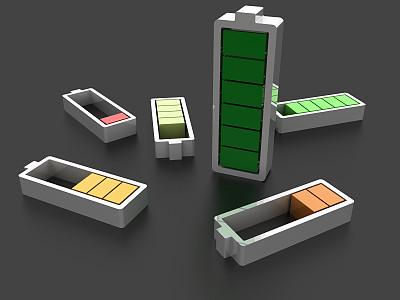Li-Po Battery Parallel Charging Board
Sep 29, 2019 Pageview:1269
A lithium polymer battery is a rechargeable cell of lithium-ion technology that uses a polymer electrolyte instead of a liquid-based one. There are many ways in which such a battery can be charged, and parallel Charging is one of the well-known methods in this era. This article will guide you on parallel charging and its relation to LiPo batteries in general. The content should be able to help you conclude whether or not such a charging method is safe for your LiPo battery and how to go about it.
What is parallel charging?
Parallel Charging is an advanced charging technique that permits you to charge more than one battery pack at the same time. For this technique to work sufficiently, the battery packs must all have the same cell count or voltage. If one were to charge a battery pack then unplug it after it's done to charge another, it would be very inefficient and tiring. Parallel charging, however, counteracts this measure by saving much time since all the battery packs are charged at once.
Understanding the Parallel charging board/circuit
In a parallel board or circuit, the voltage always remains the same while joining the positives and negatives on each terminal together. While the current in the board increases, the voltage remains stagnant. When you use an excellent parallel charger with proper wiring, the current will flow between the battery packs while the voltage is adjusted until they are all equal. The charger tends to sense all the battery packs as one large pack and charges it as a single pack.?
What you need for parallel charging
· A parallel wiring adapter for the main and balance leads. This adapter can accommodate as little as 2 battery packs and up to 6 packs based on your preference.?
· All the battery packs charged in a parallel charging system must be of the same type and have the same cell count. The capacity, C-rating, age, or brand is not considered in this charging criteria.?
Basic guidelines for parallel charging
As much as this technique is a great way to charge your LiPo battery, it is also prone to error, and thus one should follow some basic rules to avoid such incidences. Precautions should be adhered to when charging your battery using this technique. A few of the significant charging laws to be followed include:?
· Same cell count
Your batteries must all have the same cell count, which means that if you're to charge 3S types, it would only consist of that specific line of the specification.?
· Keep a close eye on your battery while charging
Refrain from leaving your LiPo batteries unattended on a parallel charger. You might be able to catch some irregularity signs such as overheating, crackling, or swelling if you keep a close eye on it.?
· Check the voltage
One should be able to check the voltage of each pack using a LiPo voltage checker before considering parallel charging.?
· Do not charge unworthy batteries
Apart from only parallel Charging, you should never charge weak batteries. Deformed or deteriorated LiPo batteries are a significant sign of defected cells, and they can result in higher internal resistance. This might significantly increase the temperatures, in the end, leading to fires.?
· Charge current
To be on the safe side, one should use a charge current of around 1C.?
· Safety
You can never be too safe when charging your LiPo battery using parallel charging. However much you may think you're cautious, you should keep a fire extinguisher nearby and use a metal box to store batteries while charging. This helps prevent the spread of unnecessary fires.?
· Capacity
It is advised that you only charge batteries of similar specifications to be on the safe side of life. One should also use packs with capacities that are within a reasonable range.?
· Connecting balance leads
Using balance leads when parallel Charging prevents the charger from overcharging a particular cell. It may not seem different from individual Charging, but since its parallel, it saves a lot on time.?
Can you charge your Li-Po battery in parallel?
Charging LiPo batteries in parallel can only work with the same cell count batteries. They can have variations in capacities and states of discharge. However, common sense and reasoning should be considered when using parallel charging. You cannot possibly expect to charge a battery that was 5% discharged parallelly with one that was 90% discharged. Other than that, charging LiPo batteries in parallel is safe and therefore an excellent recommendation.?
Do you have to balance the Li-Po battery every time?
Reasoning states that a single LiPo cell cannot be balanced against itself. However, any battery pack with two or more cells should be balanced with every charge or regularly. Balancing helps inhibit irregular current flow and thus giving your optimum battery performance. Balancing also tends to extend the lifespan of the battery in general.?
It should be noted that LiPo battery packs vary in quality between different brands, and this suggests that a higher quality pack will balance better than low-quality ones. Similarly, good chargers tend to balance better than poor ones.
Words of caution
Parallel Charging is an upgraded charging technique that requires knowledge and understanding of batteries and electrical applications. If you are not at all comfortable with charging calculations and don't have access to the right Parallel Board, then this advanced charging technique may not be suitable for you.?
Conclusion
Parallel Charging is an excellent way of saving time that would've been wasted on individual Charging. For you to get the most out of such a technique, you will need to follow the guidelines provided by this article to the fullest. Also, you should consider going for quality chargers and battery packs that will give outstanding performances. Investing in parallel charging seems to be an excellent long-term investment that will not disappoint you.?
In the end, the battery's performance depends on you. You should consider taking good care of your LiPo cell because even if you were to use an imperfect cell on such an advanced charging technique, the results would be catastrophic.
- Prev Article: Li-ion Battery Charging Myths
- Next Article: Liquid Metal Battery VS Lithium-Ion
Leave Message
Hottest Categories
-
Hottest Industry News
-
Latest Industry News











